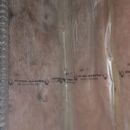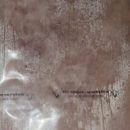Localized condensation inside vapour barrier in basement
Hello!
I’ve been trying to troubleshoot an issue I’ve been having in my basement regarding condensation on the inside of the plastic vapor barrier on top of my fiberglass insulation.
Some useful info
– I’m in climate zone 5b (Ottawa)
– The condensation is very localized in the corner around the washer & dryer
– The house is a 94 build
– I don’t currently have a dehumidifier set up but I’m planning on getting one today
– The outside foundation has no visible crack
– We’ve been told that the grading of our lawn could be a bit better above the area there
Were looking at asking a foundation/waterproofing expert to come take a look at all this and give us advice but I’m also curious at what you guys might have to say
GBA Detail Library
A collection of one thousand construction details organized by climate and house part













Replies
Ddunit,
I specified quite a few basement walls like that when I worked in Ottawa in the the late 80s. It was how we did it back then and unfortunately it encourages condensation exactly as you are experiencing. There really isn't a way to avoid it with that wall assembly, and the remediation is to completely change the way the wall is insulated. If the condensation is local, and doesn't seem to be affecting the framing or soaking the fibreglass, I would be tempted to leave it alone.
These articles explain what is occurring and what the alternatives are:
https://www.greenbuildingadvisor.com/article/how-to-insulate-a-basement-wall
https://www.greenbuildingadvisor.com/article/three-ways-to-insulate-a-basement-wall
Seems to me something must have changed recently.
If that insulation and wood had been as wet as it appears now for 18 years it would be a rotten moldy mess long ago.
Since the drier vent just happens to be in the bay with the most moisture lets consider the possibility it could be clogged and or leaking. Consider upgrading the drier vent to steel or aluminum hard pipe from the failure prone flex pipe you now have.
Do you think there is a layer of foam insulation behind the fiberglass?
You may find this article interesting and consider upgrading to one of the models walls if you have no foam.
https://www.greenbuildingadvisor.com/article/how-to-insulate-a-basement-wall
https://www.greenbuildingadvisor.com/article/three-ways-to-insulate-a-basement-wall
Given the amount of moisture I see on the plastic I would remove the plastic at least temporarily to allow drying.
Walta
I would check if that dryer vent is in any way leaking into the wall. A seal may have failed somewhere around where the vent goes through the wall for example. I would also check that the poly is in tact in that area -- I could see a scenario like someone bumps into the washer while carrying an overstuffed laundry basket, and a screw or other pointing thingy on the back of the washer cuts a gash into the poly. Simple things to check, so maybe an easy fix. If it's been OK until recently, I agree with Walta that if this just recently became a problem after many years of being OK, then that implies something changed recently, so try to find out what changed and address that to solve the problem.
Bill